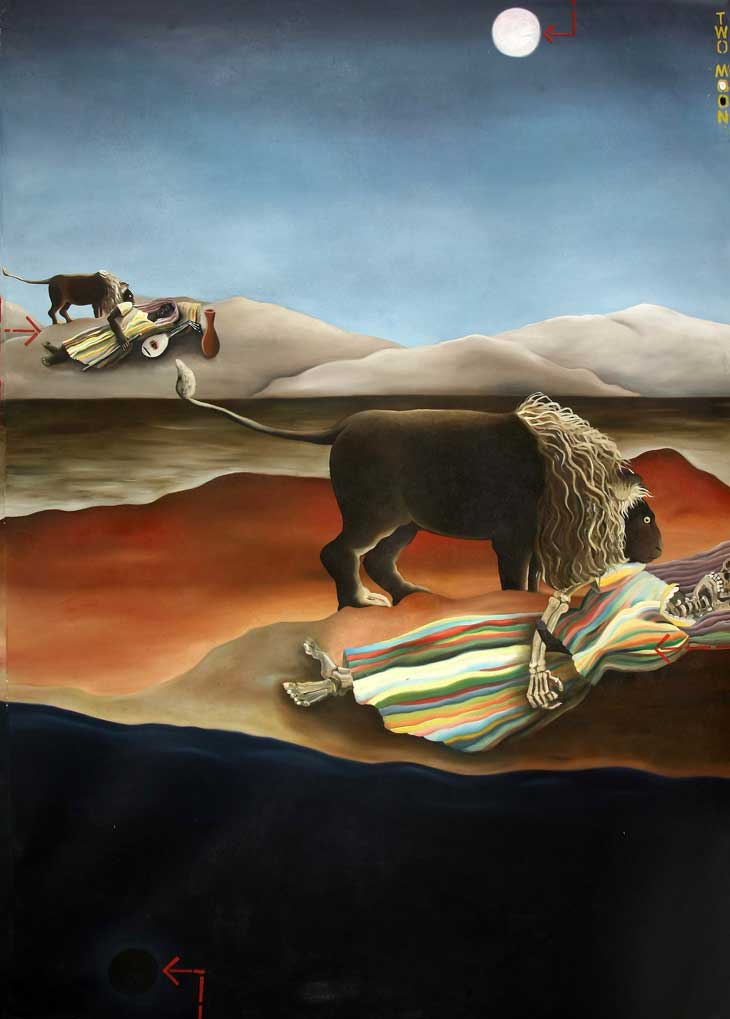

T. Venkanna
From his studio in Baroda, Venkanna remakes two works of French painter Henri Rousseau, famed for his fantastical illustrations of jungle scenes and botanical gardens. Rousseau was chastised and then celebrated for his imaginative escapism and early primitive style in Paris. The political and social context of works Venkanna references are quite different from when they were made. He re-interprets these imageries and in the process critically evaluates the norms existing within contemporary society.
Dream in Dream is appropriated from Rousseau’s 1910 painting titled The Dream. The historical significance of this work is not lost on Venkanna as he intentionally renders it as a post-modern image with idiosyncratic undertones. In this work, Venkanna replaces the woman from Rousseau’s original with a nude self-portrait. In the second panel Rousseau’s verdant jungle becomes animated in Venkanna’s hands. Turned on its side, the thin canvas takes the same subject but satirises it using cartoons to the point where the panel becomes garish.
Two Moon is based on an original work by Rousseau entitled The Sleeping Gypsy 1897. In his second canvas from the series Venkanna has taken the original scene from Rousseau’s painting and duplicated it as a repetition of the motifs within the painting itself. With very deliberate alterations to his canvas, Venkanna’ssleeping gypsy is both alive and dead, as he paints in a skeleton where Rousseau had painted a resting figure in multi-coloured dress. Venkanna’s figure brims with unrequited and unfulfilled lust. The black moon painted below is a sinister twin of Rousseau’s paler one, and symbolizes the tragedy of the figure’s former life. Although his body has turned skeletal in death, his penis, so charged with desire, stays alive with lust and remains fleshly, erect and blackened. The painting also resembles post-war American painting styles due to the additional red arrows on the surface of the canvas, crudely labeling the edge of the work.

